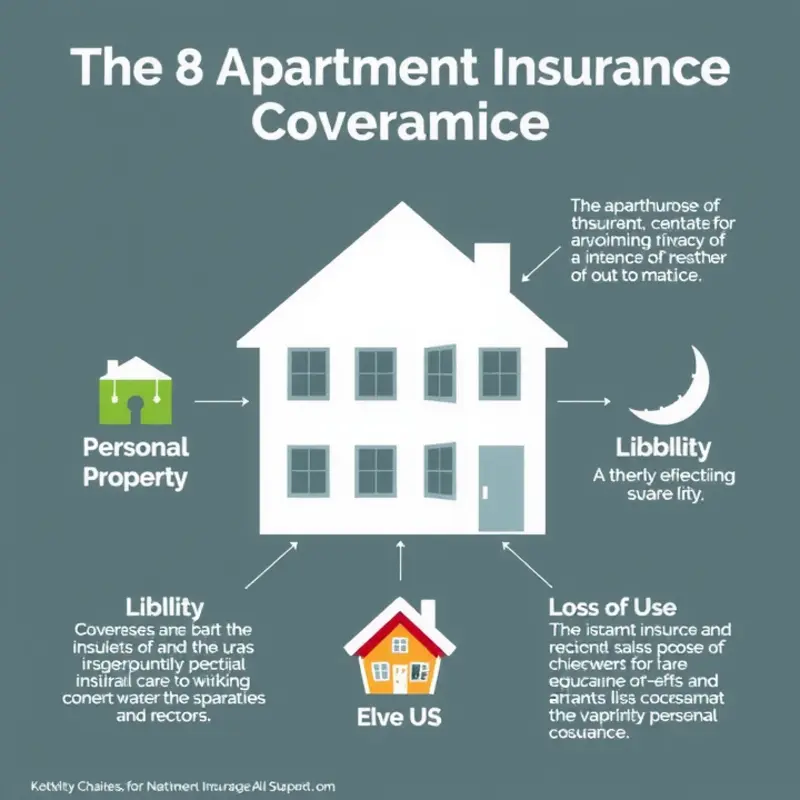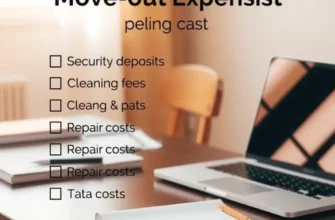Navigating the world of apartment insurance can feel overwhelming, especially for young professionals, students, and families embarking on the exciting journey of renting. While securing a cozy place to live is crucial, understanding how to financially protect that space is equally important. Apartment insurance—often referred to as renters insurance—safeguards your personal belongings and can offer liability coverage in case of accidents. As you settle into your new home, budgeting for this essential policy can not only bring peace of mind but can also be achieved without stretching your wallet too thin. In this guide, we’ll break down the critical aspects of budgeting for apartment insurance, ensuring you can create a financial plan that aligns with your lifestyle and obligations. Whether you’re sharing a rented space with a partner or setting up your own student apartment, gaining clarity on this topic will empower you to make informed decisions that protect both you and your belongings. Let’s explore how to navigate the waters of insurance budgeting together!
Understanding Apartment Insurance: The Basics

Apartment insurance, often known as renters insurance, is a crucial, yet often overlooked, aspect of renting a living space. It offers protection not only for your personal belongings but also shields against potential liabilities. This coverage becomes indispensable in safeguarding against unforeseen circumstances, such as theft, fire, or accidents.
Several types of coverage are typically included within a renters insurance policy. Personal property coverage ensures that your belongings, like electronics, furniture, and clothing, are protected against risks like fire or theft. If your laptop or television is damaged due to one of these covered events, your policy can help repair or replace them.
Liability coverage is another essential element. This protects you if someone gets injured at your place and decides to sue. For instance, if a guest slips on a wet floor in your kitchen, your liability coverage can handle legal fees or medical expenses up to the policy limit.
The next important coverage is additional living expenses (ALE), which kicks in if your apartment becomes uninhabitable due to covered damages. ALE covers costs like hotel bills or temporary rentals during repairs, ensuring that you have a roof over your head while your primary dwelling is being fixed.
Understanding what your insurance policy covers is just as important as knowing what’s not covered. Standard renters insurance policies do not typically cover damages from natural disasters such as floods or earthquakes. For those, separate coverage might be necessary. Evaluate your geographical risks and add relevant policies if needed.
When choosing an insurance policy, consider the following factors:
-
Coverage Limits: Ensure that your policy limits align with the value of your possessions. Underestimating this can lead to inadequate compensation if an incident occurs.
-
Deductibles: This is the amount you need to pay out-of-pocket before your insurance kicks in. Higher deductibles generally mean lower premiums but more out-of-pocket expenses when filing a claim.
-
Reputation of the Insurer: Look for insurers with good customer service ratings and swift claims processing. Their responsiveness can significantly impact your experience if you ever need to file a claim.
The cost of renters insurance can vary based on multiple factors, such as location, the value of your belongings, and your deductible. Despite a wide range, renters insurance is typically affordable, making it a sensible investment for peace of mind.
For further understanding of managing living expenses when renting, explore apartment financial planning tools. This resource connects various aspects of financial management to achieve a more comprehensive understanding of budgeting alongside insurance.
Whether you’re a student setting out on your own or a family choosing a cozy nest, knowing these basics empowers you to select a policy that offers concrete protection without straining your budget.
Crafting a Budget for Your Coverage

Understanding the nuances of apartment insurance is half the battle; the next step is to align it with your financial blueprint. Begin by assessing the coverage amount required. Calculate the value of your possessions—furniture, electronics, clothing—and consider potential liability costs. This evaluation helps determine adequate coverage, protecting you against underinsurance.
Balancing insurance costs with other financial commitments is crucial. Start by listing all monthly expenses—rent, utilities, groceries, and entertainment. Identify any discretionary spending that can be trimmed. Allocate a portion of your budget specifically for insurance, ensuring you’re guarded without financial strain. Use budget planning tools to keep track of your financial landscape efficiently. Tools can provide a holistic view, aiding in better decision-making. Apartment Financial Planning Tools.
Once your budget framework is established, it’s time to explore insurance options. Start by soliciting quotes from multiple insurers. This approach gives a broad perspective on the market, enabling a detailed comparison of premiums and coverage terms. Don’t just opt for the lowest premium. Evaluate the policy limitations, exclusions, and deductibles. Low premiums sometimes translate to higher out-of-pocket expenses in case of a claim.
Look for bundled discounts. Insurers often offer lower rates if you purchase multiple policies—such as auto and renters insurance—from the same provider. Bundling can provide enhanced coverage at a reduced rate, stretching your insurance dollars further.
Regularly review and adjust your policy. Major life events like a new job, marriage, or acquiring valuable assets can alter your insurance needs. Bi-annual reviews ensure that your coverage aligns with your current life stage, preventing overpayment or inadequate protection.
Keep an eye on policy deadlines. Missing a renewal can result in coverage gaps, leaving you at risk. Automate payments where possible, mitigating the risk of losing coverage due to oversight.
Another cost-effective strategy is to improve your apartment’s safety features. Installing smoke alarms, deadbolt locks, or security systems can attract discounts from insurers. These enhancements not only reduce premiums but also provide peace of mind.
In crafting a well-rounded financial plan, make insurance a proactive decision rather than a reactive one. With these strategies, you can secure an affordable policy that complements your financial goals, all while ensuring the safety of your living space.
Final words
Budgeting for apartment insurance doesn’t have to feel daunting. By understanding the basics of coverage and employing practical budgeting strategies, you can ensure that protecting your belongings is both affordable and effective. Remember that taking the time to evaluate your needs and shop around can lead to significant savings and peace of mind. As you embark on this next chapter of your life, consider apartment insurance as an essential ingredient in your financial health toolkit. You’re not just paying for a policy; you’re investing in your security and peace of mind.









